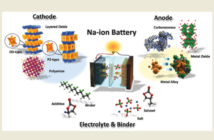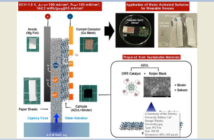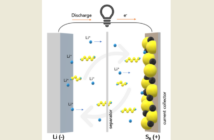Even though today’s lithium batteries are efficient, they cause a range of resource and environmental problems. Uppsala researchers have now come up with a very interesting alternative using materials from alfalfa (lucerne seed) and pine resin, along with a clever recycling strategy. Their study will be presented soon in the scientific journal ChemSusChem.
“We think our discovery can open several doors to more environment-friendly, energy-efficient solutions for the batteries of the future” says, one of the researchers behind the idea, Daniel Brandell, Senior Lecturer at the Department of Chemistry, Uppsala University.
Thanks to their high energy content, Lithium-ion batteries are very promising for various products, especially electric vehicles or large-scale energy storage in the future energy system’s electricity grid.
However, present-day lithium batteries entail a number of resource-related and environmental problem. For example, the world’s commercially extractable lithium resources are limited and whether they can meet future needs is unclear.
Moreover, it is very difficult to recover lithium from the inorganic materials used to make modern batteries. Lithium batteries contain other, even rarer materials that are hard to replace and require large energy inputs and toxic chemicals for the recovery process.
The researchers at Uppsala University’s Angstrom Laboratory came up with a battery based on recovery and renewable biological material with an energy content corresponding to that of current lithium-ion batteries.
Components of the battery are made of biomaterials from alfalfa and pine resin, and can be recycled with a low energy input and non-hazardous chemicals including ethanol and water.
The scientists have shown that the lithium extracted from a spent battery can be used for a new battery by just adding more biomaterial. Their battery proved capable of delivering as much as 99% of the energy output that came from the original battery. The researchers believe that, with future modifications, this figure can very probably become even higher.
“The use of organic materials from renewable sources makes it possible to solve several of the problems that would arise from a huge rise in the use of lithium batteries. But above all, it’s a major step forward that, to a high degree and in a simple environment-friendly way, the lithium from these batteries can be recovered. These solutions are also potentially very cost-effective,” added Daniel Brandell.
Related Articles:
The Technology Of Making Batteries Out Of Paper
Wood Sliver Battery: An Eco-Friendly Design In Producing Electricity




